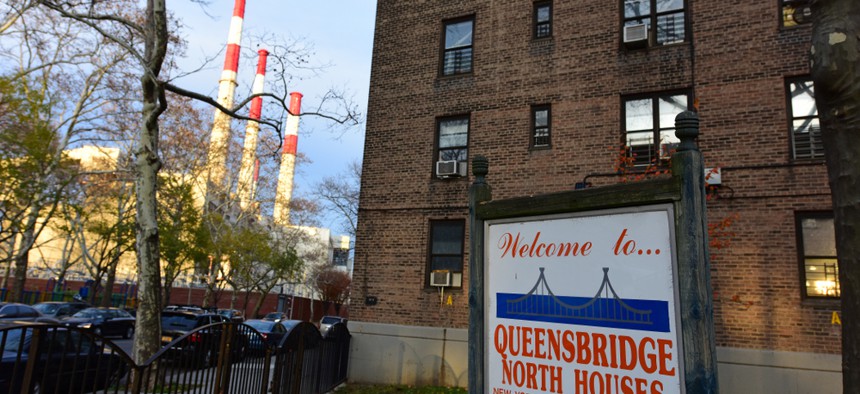President Donald Trump’s fiscal year 2019 budget proposal, released last month, proposed to gut the U.S. Department of Housing and Urban Development’s programs that help millions of Americans. The president’s budget inflicts particular harm on public housing, relying on some commonly held myths as the rationale for why these programs should be cut. As both houses of Congress prepare to submit their own budget proposals in the coming weeks, it is essential to dispel these stereotypes in order to construct a budget that protects and invests in the critical safety net that is public housing. Here are a few of the most egregious myths that found their way into the Trump budget that should be left on the cutting room floor in Congress.
Myth 1: Public housing residents can afford to pay more in rent.
Currently, families living in public housing pay up to 30 percent of their adjusted income (a figure that accounts for certain unavoidable costs like child care and medical treatment) toward rent. Trump’s proposed budget would raise the maximum rent to 35 percent of gross income. The Center on Budget and Policy Priorities projects that this change would impact more than 200,000 renters in New York, increasing rent for those households by an average of 23 percent.
The 30 percent rule is not arbitrary; people who pay more than 30 percent of their income in rent are considered rent-burdened by experts and they often have difficulty affording other necessities, such as healthy food.
The New York City Housing Authority, the nation’s largest public housing authority, serves some of the most vulnerable families in the city. About 80 percent of its nearly 180,000 households are very low income, meaning they earn less than $41,950 per year for a family of four. Given their low incomes, parents would be forced to spend less on feeding themselves and their children in order to pay for rent increases.
Myth 2: People who live in public housing are lazy and rely on government handouts.
The Trump budget suggests the implementation of work requirements for public housing residents, though 40 percent of heads of households in NYCHA are seniors, who supported by Social Security, pensions, Supplemental Security Income or veteran benefits – programs that they contributed to or earned support from through work, sacrifice or misfortune. A further 47 percent of NYCHA families are already working households. The top three employers of public housing residents are public systems that keep New York running: the city Department of Education, NYCHA and the NYPD. Very few residents who are able to work are not employed. Residents’ wages are simply not high enough to enable them to afford market rate rents.
NYCHA also offers residents adult education and training, programs to improve their financial literacy and support with business development. In fact, over the past three years, NYCHA has helped connect 8,000 of its residents to jobs.
It’s a tired trope that public housing residents are living large on public money, but the work requirements alluded to in Trump’s budget proposal indicate that this myth is alive and well.
Myth 3: Public housing authorities can make ends meet without federal funding.
Proponents of cutting federal funding for public housing would lead you to believe that local housing authorities like NYCHA can rely solely on state and local government funding to maintain their properties. They cannot. Funding affordable public housing for hundreds of thousands of residents has been the responsibility of the federal government since the New Deal. It would be an enormous strain on state and local governments to have to supply the entirety of that funding. Public housing properties are an invaluable public asset for New Yorkers. The federal government should be protecting its investment, not letting it deteriorate.
Federal funding for NYCHA has steadily decreased since 2011, but capital needs have continued to rise. Right now, NYCHA buildings need an estimated $25 billion worth of major repairs. If the proposals in the Trump budget go into effect, NYCHA’s operating budget could be slashed by an additional $466 million. As the nation’s largest landlord, NYCHA is tasked with making aging infrastructure meet the needs of hundreds of thousands of low-income New Yorkers. Without sufficient funding, it struggles to keep up with routine maintenance issues like heat and hot water malfunctions while planning for large-scale projects like roof repairs and full building renovations.
As rents rise and wages stagnate, the need for public housing is not going away. As of March 2017, more than 250,000 families were on the waiting list for a NYCHA apartment. NYCHA needs federal funding to support low-income New Yorkers who need affordable homes. But misinformation and prejudice about public housing leads to budgeting based on stereotypes rather than fact. Congress should recognize the damage Trump’s budget could do to families living in public housing in New York and elsewhere and allocate funds based on what would do the most good – not based on myth.
NEXT STORY: An open letter to NYC’s first nightlife mayor


